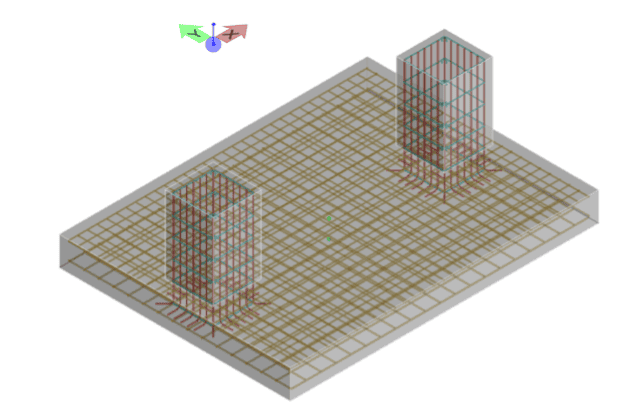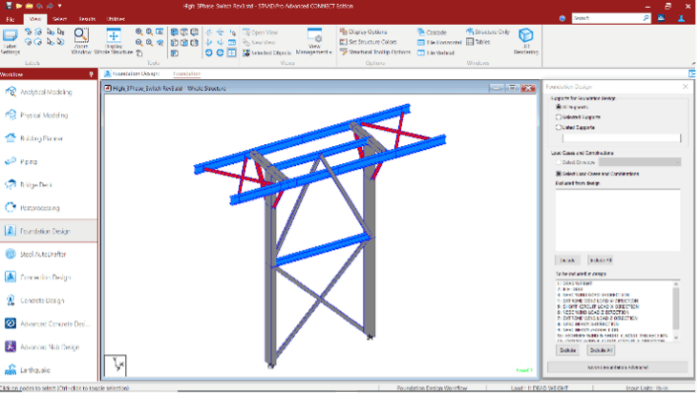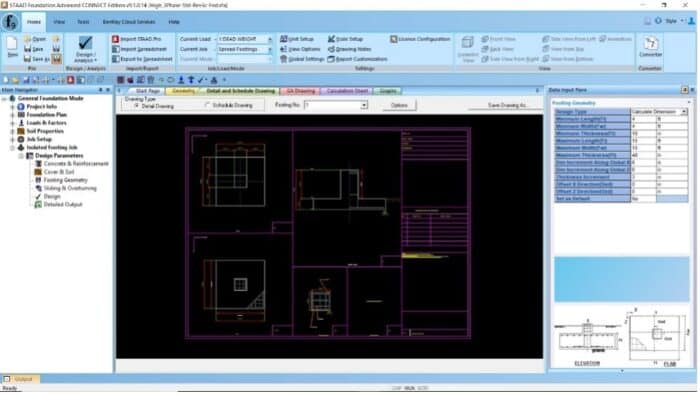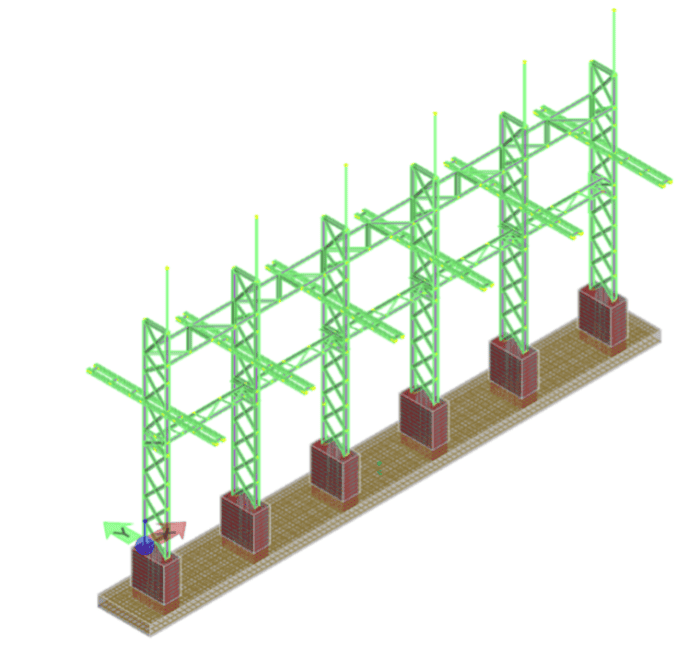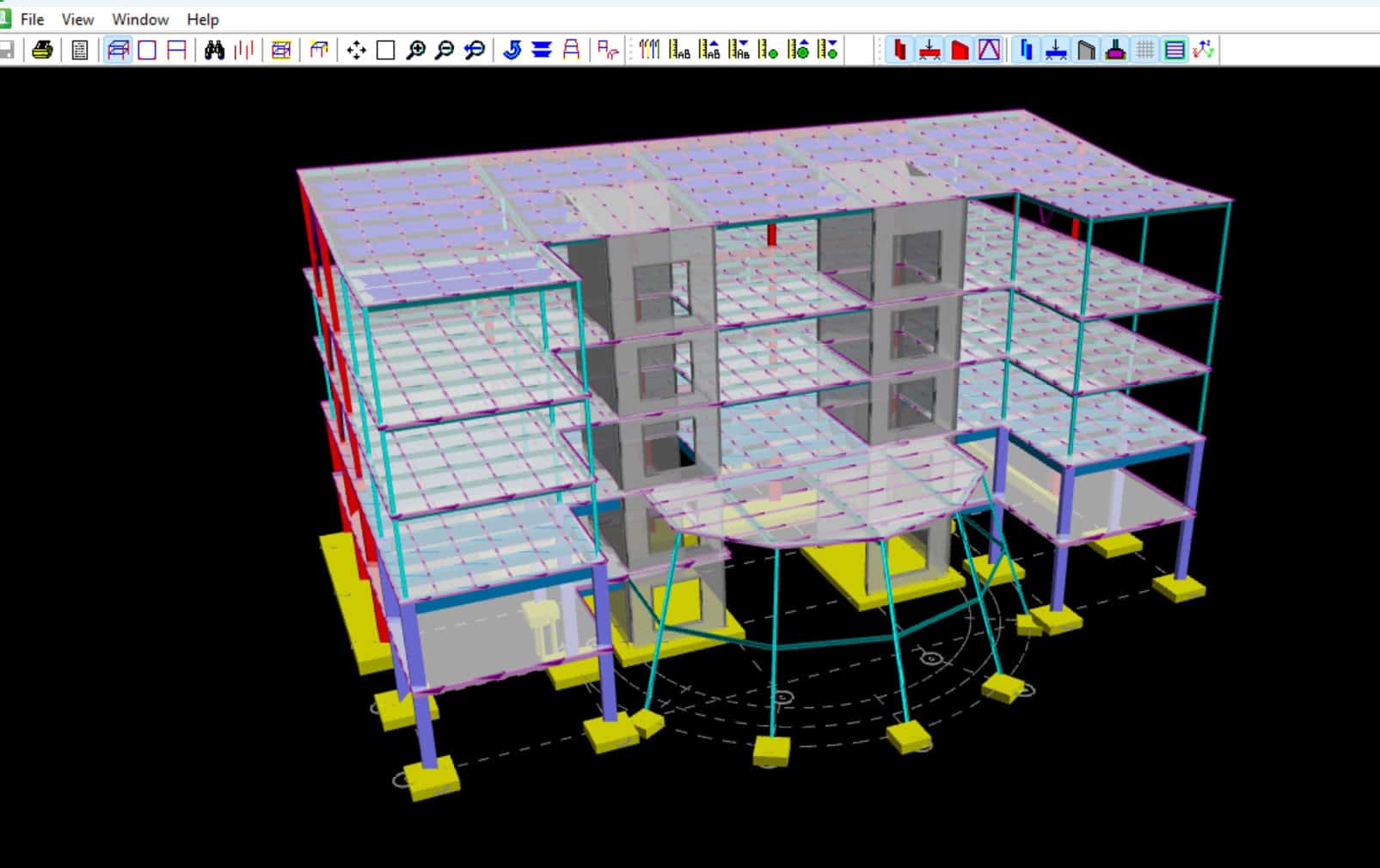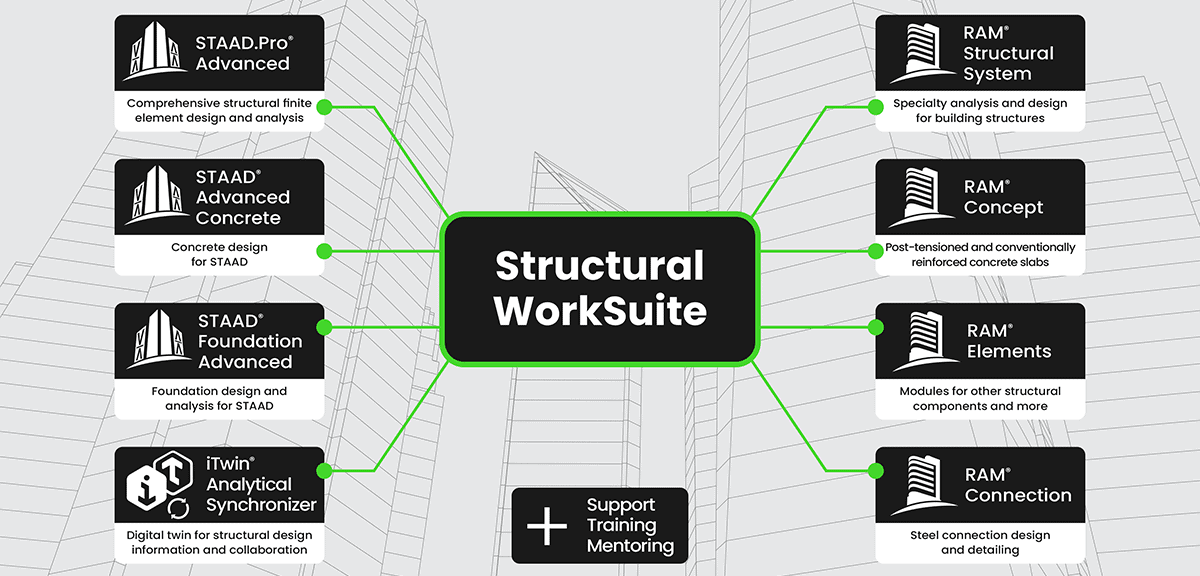In the ever-evolving structural engineering landscape, ensuring that the foundations of our designs stay strong is the only way to ensure lasting infrastructure. As the Canadian infrastructure and innovation landscape continues to strengthen, engineers are being challenged more than ever to deliver projects quickly and cost-effectively–all without sacrificing quality of design. In this piece, we will demonstrate how foundation design can be optimized through the STAAD product workflow, with a spotlight on the incorporation of the Canadian A23.3 2019 Code. Designing through our fully interoperable STAAD.Pro and STAAD Foundation Advanced programs guarantees a complete project workflow.
Canadian building codes are revised every few years, and Bentley aims to keep our preprogrammed codes as current as possible. STAAD Foundation Advanced uses Canadian code CSA A23.3:19 for the design and analysis of isolated footings, combined footings, pile caps, mat foundations, and other foundation elements.
A complete structure and foundation design workflow can be established between STAAD.Pro and STAAD Foundation Advanced. These programs are powerful and versatile–an ideal combination for companies that want the ability to tackle a variety of projects. The load combinations applied in your structural analyses can vary, and it is important to have control over the factors that you apply. STAAD.Pro features the ability to manually create load combinations, which is handy if you want to apply a code that is not already featured. Users can also generate automatic load combinations and edit the rules to create custom versions of code. Most importantly, these custom combinations can be saved, shared, and imported into other projects through seed files, allowing your engineering teams to work together and avoid unnecessary work and repeated efforts.
Once you have analyzed a structure within STAAD.Pro–what now? The integration between STAAD.Pro and STAAD Foundation Advanced is seamless. With one click, your geometric and load information is transferred over, with load reactions automatically applied to your foundation design. Working in the same product family gives engineers a clear and consistent workflow. Interoperability is key when working with analysis programs to ensure quick and accurate data transfer. Changes to the structural model and analysis are applied automatically through to the foundation design with the click of a button–all without users having to worry about manually catching every necessary edit. The speed of this transfer saves engineers hours of time and effort, letting your resources serve you best. There will be no more wasted effort with spreadsheet iterations when you have a user-friendly program that does the work for you.
Canadian foundations designed in STAAD Foundation Advanced are optimized and detailed utilizing CSA A23.3:19. Just like your structure design, you have influence over your foundation. Engineers can customize job criteria and design parameters to fit any situation they are faced with.
As with all designs, the results are what matter most. STAAD Foundation Advanced provides multiple reports in shareable formats, so you can prove your results.

For more information on Canadian codes and foundation designs in STAAD, check out our Coffee Corner: STAAD – NAOU – Optimizing Foundation Design with a Focus on Canadian A23.3 2019 Code.
Don’t miss out!
We are hosting a webinar all about these Canadian codes and the advantages that they bring to the STAAD workflow. Join us on May 8th for Improving Canadian Structural Design – Leveraging the Latest Canadian Codes in STAAD and RAM. Register HERE!
For further exploration into application of Canadian codes in STAAD Foundation Advanced, see the following designs in our online library:
- Pilecap Design per Canadian A23.3 2019
- Mat Footing Design per Canadian A23.3 2019
- Isolated Footing Design per Canadian A23.3 2019
For additional information, you can contact Shyla directly at [email protected].


